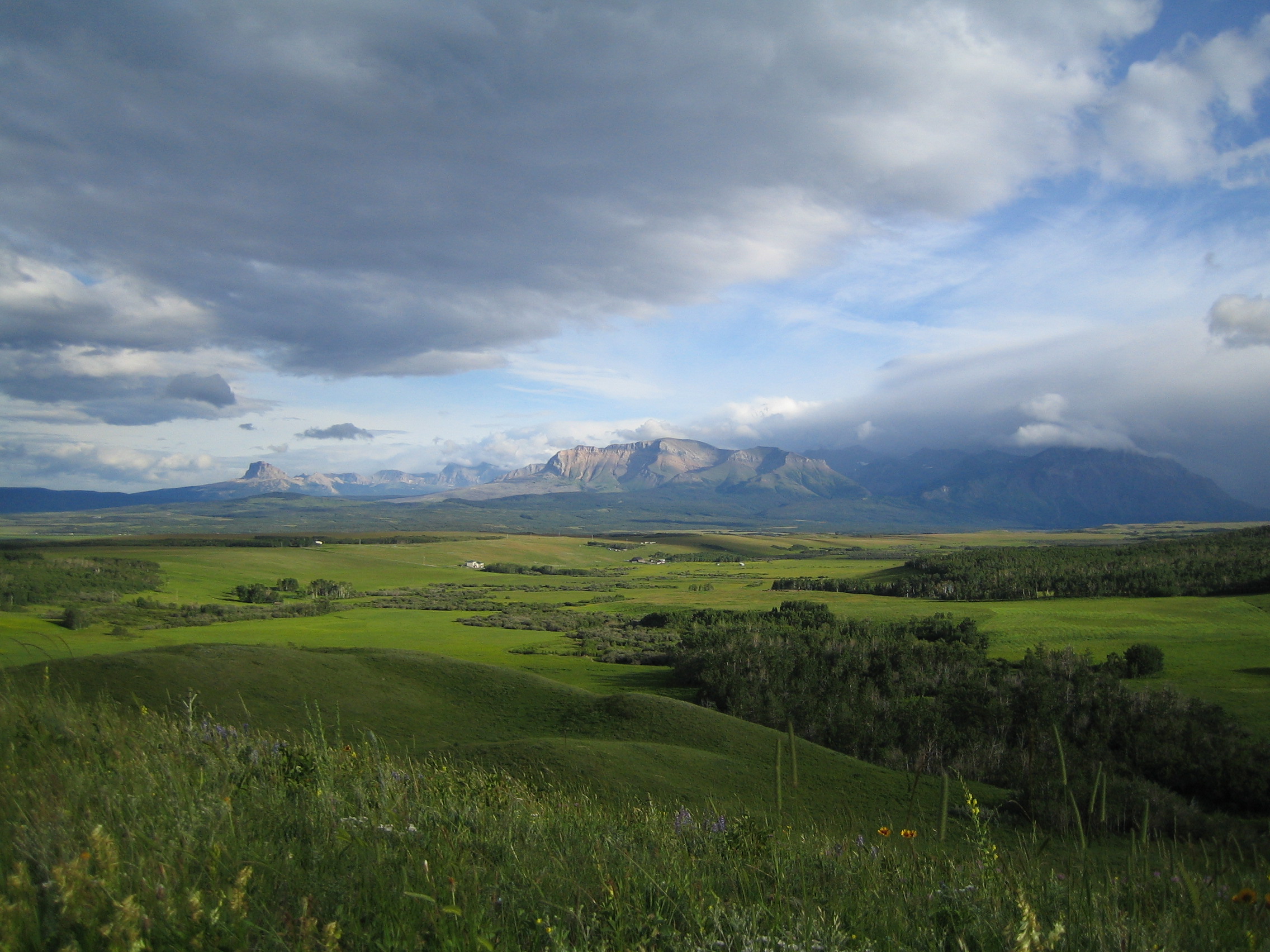Agriculture and Ranching
The ranchers who settled here at the end of the 1800s counted on native grasses and the frequent chinook winds to make it possible to raise huge cattle herds with very few fences, barns, or equipment. Homesteads were spread far apart, and the horse was a logistical necessity. However, the same west wind that eases winters also dries the land so that cultivated crops are hard to grow. Recognizing that some of the technological "improvements" to farming over the past century may have caused environmental damage, ranchers in the new millennium have ushered in a movement toward planned sustainability and greater emphasis on stewardship. Attention is given to the protection of riparian areas and waterways in particular, and the use of chemicals is carefully managed. Crop strains have been developed for the specific southwest Alberta climatic conditions. Even so, farm and ranch income has been steadily shrinking over time. Most farm and ranch families have at least one off-farm job/income to support them. The number of young people willing to take over the family farm has been declining, while the number of middle-aged people who are buying farms for weekend recreation and retirement is increasing. Those people who remain on the land as producers are possessive (attached to the land) but practical and pragmatic. They are organized and have adopted a tactical approach to development. They see development through cautious eyes, are willing to listen, and more importantly, willing to educate proponents in their values and stewardship philosophies.
 Photo © James Van Leeuwen
Photo © James Van Leeuwen
